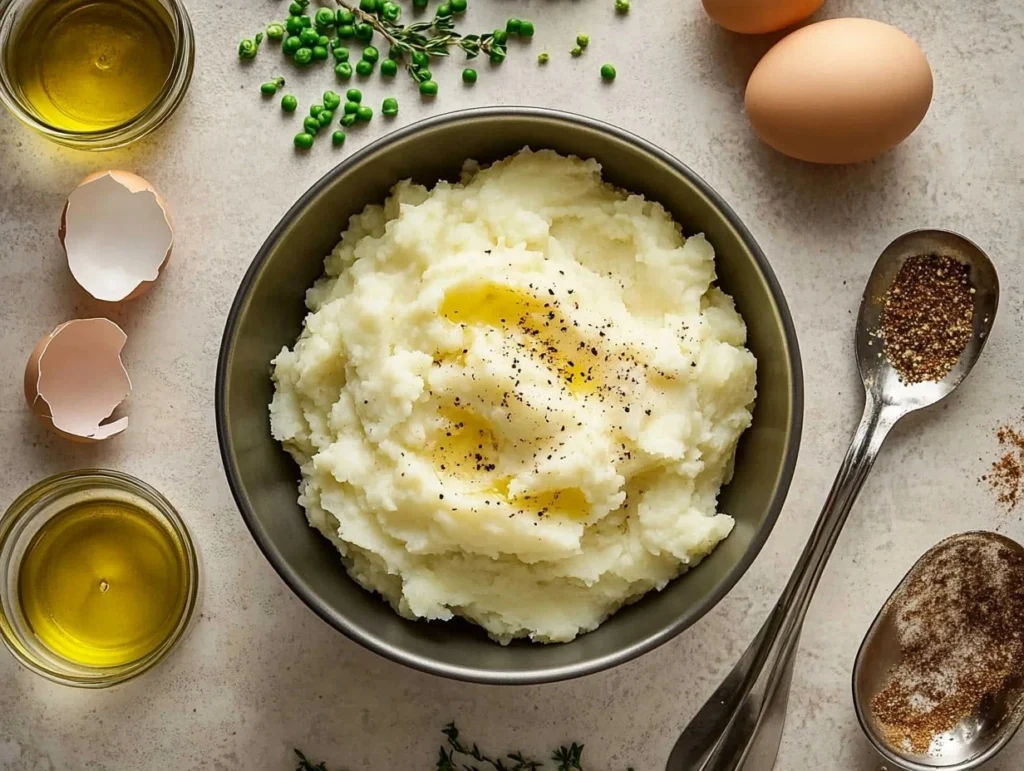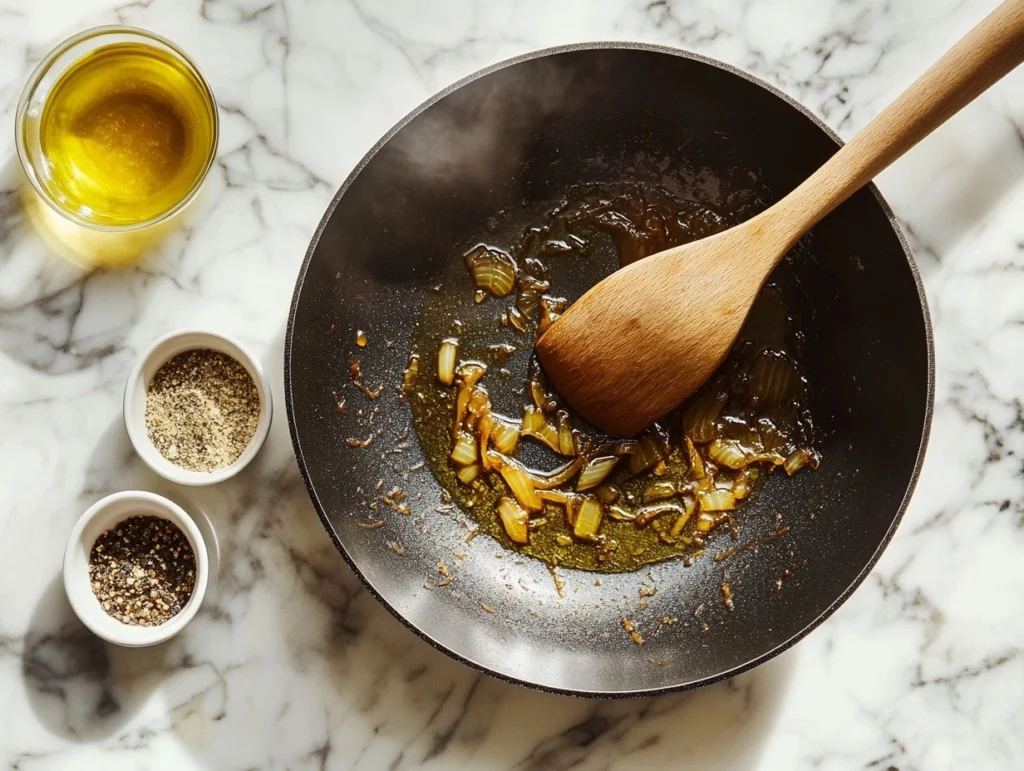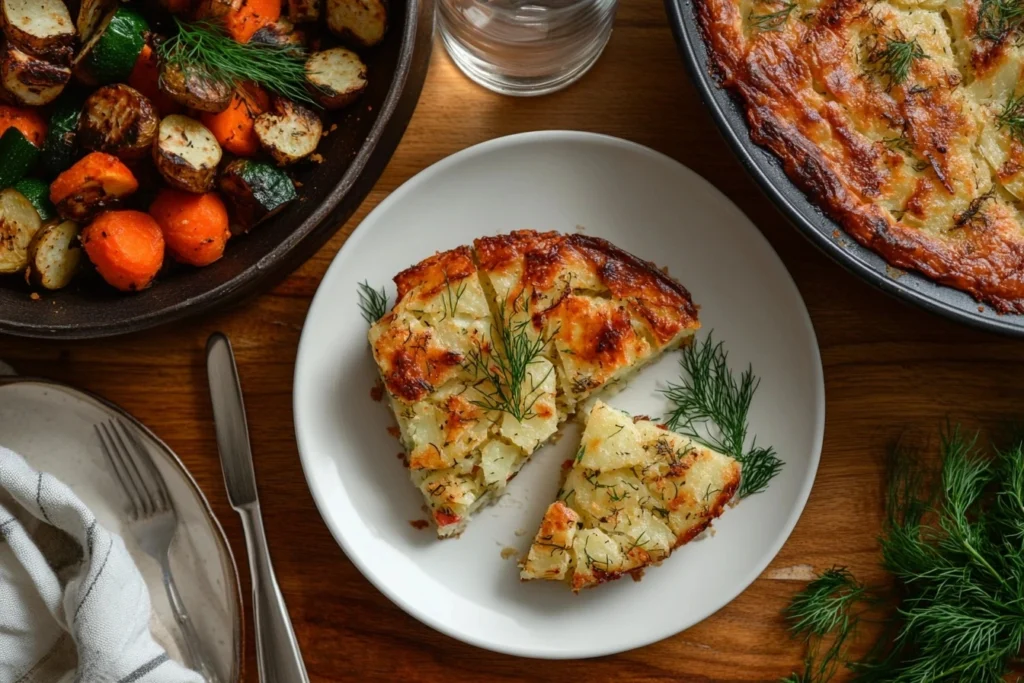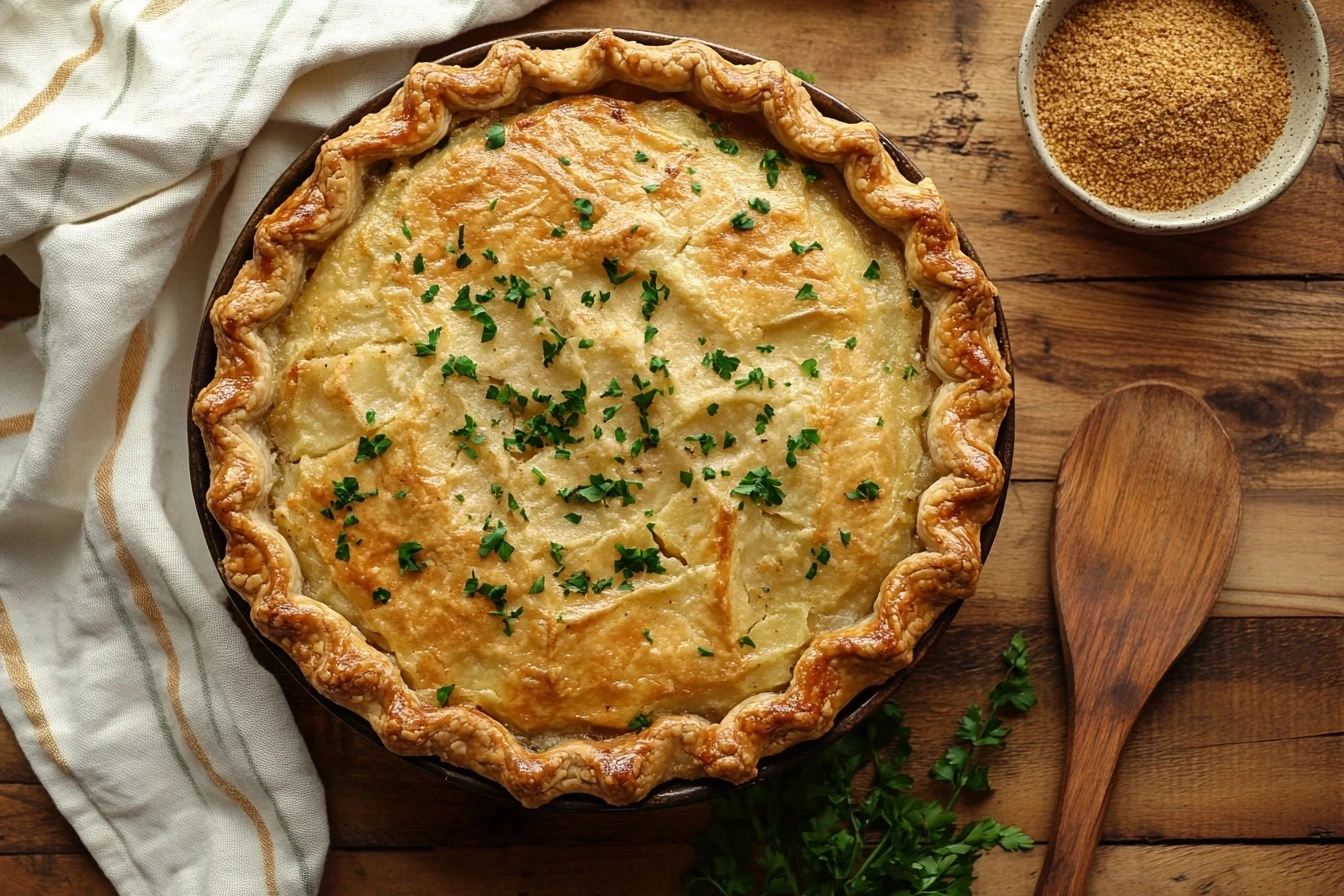Are you ready to try a dish that’s as comforting as it is perfect for Passover? Let’s talk about Passover potato pie—a simple, delicious recipe that will quickly become a family favorite. Whether you’re looking for an easy way to switch up your traditional Seder menu or just love the idea of a hearty, flavorful dish, this pie has you covered. It’s not only easy to prepare but also packed with wholesome ingredients that make you feel good about what you’re serving.Sweet Potato Brownies: Guilt-Free Treats – Use anchor text: “explore another delicious way to use potatoes in desserts.”
What makes this recipe a must-try? First, it’s versatile—you can pair it with just about any main dish. Think brisket, roasted chicken, or even a vibrant green salad. Next, the crispy edges and creamy center make every bite irresistible. Plus, you can customize it with your favorite herbs or spices to make it uniquely yours.
What’s even better? This recipe connects you to Jewish traditions while giving you room to explore modern twists. It’s the perfect balance of heritage and creativity, and it’s guaranteed to impress your family and guests alike. Whether it’s your first time making a Passover dish or you’re a seasoned cook, this recipe is as foolproof as it is delightful.
Ready to wow everyone at the table? Keep reading to learn how to create this delicious Passover potato pie step by step. Trust me, you’re going to love it!

Key Ingredients for a Perfect Passover Potato Pie
Selecting Fresh Potatoes
The foundation of any great Passover potato pie is, of course, the potatoes! Starchy varieties like Russet or Yukon Gold are your go-to options. Why? Because their high starch content creates that signature fluffy, creamy texture you crave in every bite. Avoid waxy potatoes like red or fingerling—they won’t provide the same structure or creaminess.
When selecting your potatoes, look for ones that are firm, smooth, and free from green spots or sprouts. These imperfections can affect the taste and texture of your dish. Once you’ve picked the perfect spuds, make sure to wash, peel, and cut them evenly to ensure they cook at the same rate.
Did you know? Starch-heavy potatoes are a natural thickener, so you won’t need to rely on flour or other additives that aren’t kosher for Passover. This is what makes them such a star ingredient in traditional Jewish recipes.
Another tip is to use freshly peeled potatoes for the best flavor. Pre-cut or pre-packaged potatoes can lose some of their natural moisture and starch content, which impacts the final result. The freshness you start with truly shines through in the finished dish.Murasaki Sweet Potatoes: The Ultimate Guide – Use anchor text: “learn about unique potato varieties and their culinary uses.”
Essential Seasonings and Flavor Boosters
Seasonings are where the magic happens! While salt and pepper are the backbone of this dish, adding just a few extras can elevate your Passover potato pie to new heights. Paprika adds a gentle smokiness, garlic powder deepens the flavor, and fresh herbs like dill or parsley bring brightness to every bite.
Want to take it up a notch? Sauté some onions until they’re golden and sweet, then mix them into your potato batter. The onions add a rich, caramelized depth that makes the pie irresistible. For Passover, olive oil or schmaltz (chicken fat) works best for cooking—it keeps the dish dairy-free while adding a velvety richness.
Another idea is to experiment with dried herbs like thyme or oregano for an earthy undertone. If you prefer a bold flavor profile, a pinch of turmeric or cumin can give your dish an aromatic twist. Seasonings allow you to make this traditional recipe your own while staying true to its roots.

Step-by-Step Instructions for Passover Potato Pie
Preparing the Ingredients
Start by gathering everything you need: potatoes, eggs, onions, olive oil (or schmaltz), and your seasonings. Peel and chop the potatoes into equal-sized pieces for even cooking. Boil them in salted water until fork-tender, which should take around 20 minutes.
While the potatoes are boiling, get started on your onions. Finely chop them and sauté in olive oil until they’re soft and golden brown. This step is essential for adding that sweet, caramelized flavor that takes the pie from good to great.
Once the potatoes are cooked, drain them well and mash until smooth. Let them cool slightly—this is important! Adding eggs to hot potatoes can cook them too quickly, so make sure the mixture is warm, not steaming.
If you’re short on time, you can prepare the mashed potatoes and sautéed onions ahead of time. Store them in the fridge and assemble the pie just before baking. This makes the dish even more convenient for busy holiday preparations.Crispy Air Fryer Breakfast Potatoes – Use anchor text: “try a crispy variation of potatoes for your next meal.”
Assembling and Baking
Preheat your oven to 375°F (190°C). Grease a baking dish with olive oil and pour in your potato mixture, spreading it evenly. For an extra crispy top, drizzle a bit more olive oil over the surface.
Bake the pie for 45–60 minutes, or until the edges are golden brown and the center is set. You’ll know it’s ready when the top looks crisp and slightly puffed. Let it cool for 10 minutes before slicing—this helps the pie hold its shape when served.
If you want individual servings, try baking the potato mixture in muffin tins. These “mini pies” are perfect for portion control and look adorable on a serving platter.
How to Serve and Present Passover Potato Pie
Garnishing and Plating Tips
Serving Passover potato pie is all about making it look as good as it tastes. Before serving, sprinkle the pie with freshly chopped parsley, dill, or even a light dusting of paprika for a pop of color. This not only enhances the flavor but also adds a touch of elegance to your presentation.
For a neat serving, allow the pie to cool slightly before slicing it into uniform squares or wedges. Use a sharp knife to get clean edges. Place the pieces on a decorative serving plate, spacing them out slightly to highlight their golden crust.
Pairing Ideas for a Balanced Meal
Passover potato pie is a versatile dish that pairs beautifully with a variety of Passover-friendly foods. Serve it alongside roasted vegetables, brisket, or a simple matzo ball soup for a hearty meal.
For a lighter pairing, consider a crisp cucumber salad with a lemon dressing or roasted asparagus. If you want to add a sweet contrast, serve with a side of applesauce or even a drizzle of honey. These pairings enhance the flavors of the pie while keeping the meal balanced and satisfying.
Creative Variations of the Passover Potato Pie Recipe
Spicing Up the Classic Recipe
Who says tradition has to be boring? Add a bold twist to your Passover potato pie with spices like turmeric, cumin, or smoked paprika. These spices not only bring warmth and flavor but also give the pie a vibrant color that makes it stand out on the Seder table.
For those who enjoy a bit of heat, a dash of cayenne pepper or red chili flakes can add an exciting kick. Be sure to taste as you go—spices should enhance, not overpower, the delicate potato flavor.
Adding Unique Ingredients for Extra Flavor
Take inspiration from global flavors to elevate your Passover potato pie. For a Moroccan-inspired version, mix in sautéed dandelion greens or spinach. You could also add grated carrots, sweet potatoes, or even zucchini to create layers of flavor and texture.
Another creative addition? Incorporate roasted garlic or sun-dried tomatoes into the mix for a savory twist. These ingredients not only boost flavor but also bring visual interest to your dish, making it as pleasing to the eye as it is to the palate.

FAQs
Can Jews eat potatoes during Passover?
Yes, potatoes are a staple during Passover and are commonly used in many traditional recipes, including potato kugel and Passover potato pie. They are kosher for Passover because they are not leavened and are an excellent substitute for grain-based dishes.
Can you eat kugel on Passover?
Yes, kugel can be eaten on Passover, provided it is made with Passover-friendly ingredients. Traditional kugels use matzo meal or potato starch instead of flour, making them suitable for this holiday. Variations like potato kugel are especially popular.
What is a substitute for matzo meal in potato kugel?
Potato starch is a great substitute for matzo meal in potato kugel. You can also use ground-up matzo or even almond flour as a Passover-compliant alternative, depending on your recipe.
What is a substitute for matzo meal in potato kugel?
Potato starch is a great substitute for matzo meal in potato kugel. You can also use ground-up matzo or even almond flour as a Passover-compliant alternative, depending on your recipe.
What is the history of the Maakouda?
Maakouda is a traditional Moroccan dish made with potatoes, eggs, and spices. It has roots in North African Jewish cuisine and is often served during Passover. Some variations include greens like dandelion or spinach, making it a flavorful and versatile dish.
What are the 5 forbidden foods on Passover?
The five main forbidden foods on Passover are wheat, barley, oats, rye, and spelt—unless they are made into matzo under strict supervision. These grains are avoided because they can become leavened.
Conclusion
Congratulations! You’ve just discovered a fun and tasty way to reinvent the traditional Passover potato pie. This Tuck Fish Potato Kugel combines the comforting flavors of potatoes with the savory richness of fish for a dish that’s truly unforgettable. First, it’s perfect for your Seder table, but it’s also versatile enough to enjoy throughout the week.
Next, think about all the ways you can change it up. Want a spicy kick? Add a pinch of cayenne. Craving something fresh? Toss in your favorite herbs. It’s easy to make it your own.
In addition, this kugel is great for sharing. Slice it up, serve it warm, and watch everyone’s face light up with delight. It’s more than a dish—it’s a celebration of tradition with a modern twist.
So why wait? Grab your apron and give this recipe a try. You’re going to love every bite!

